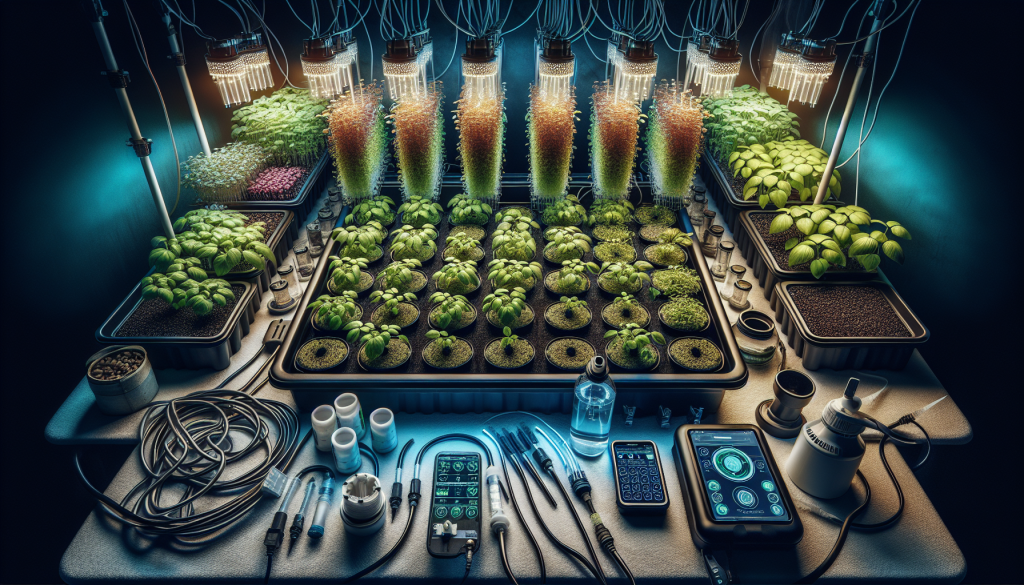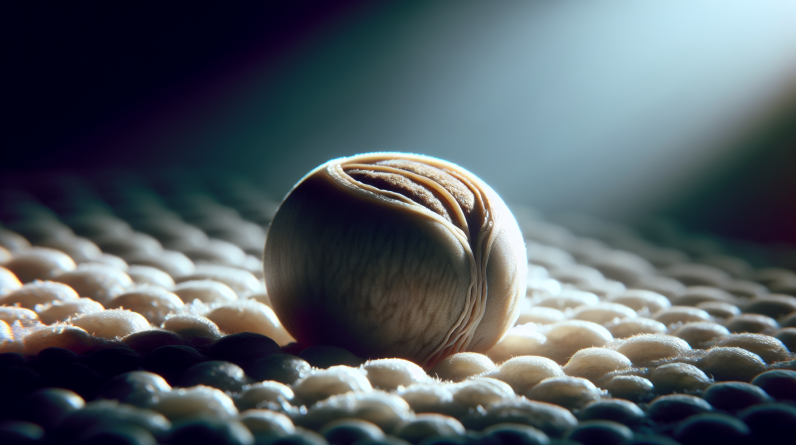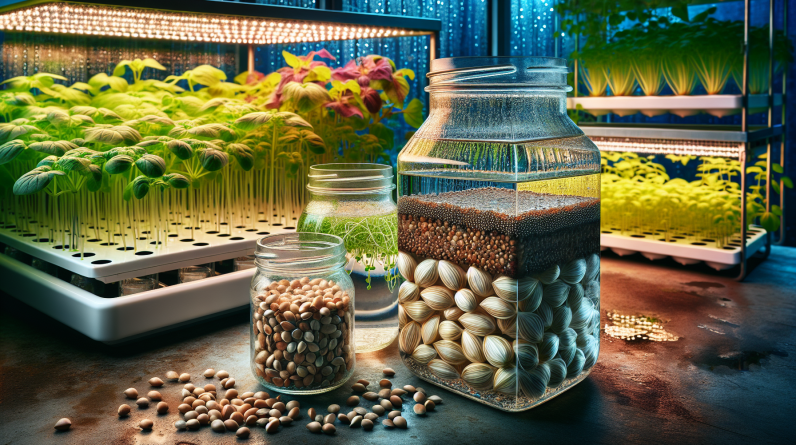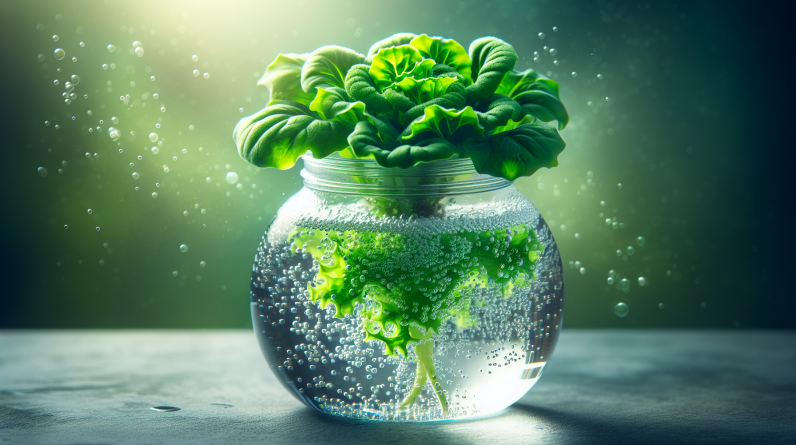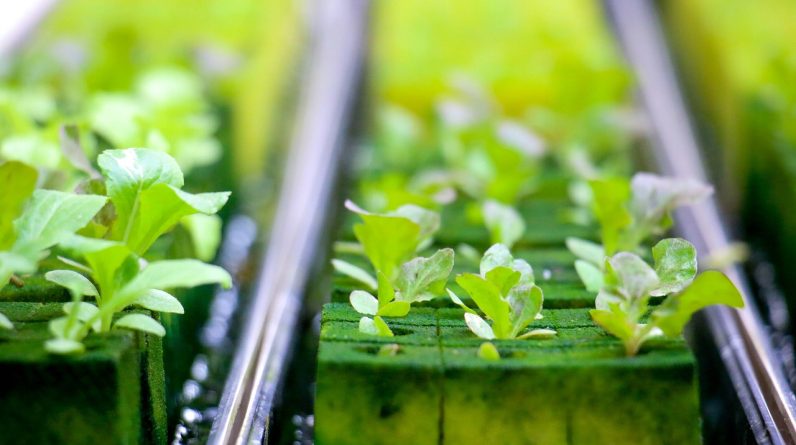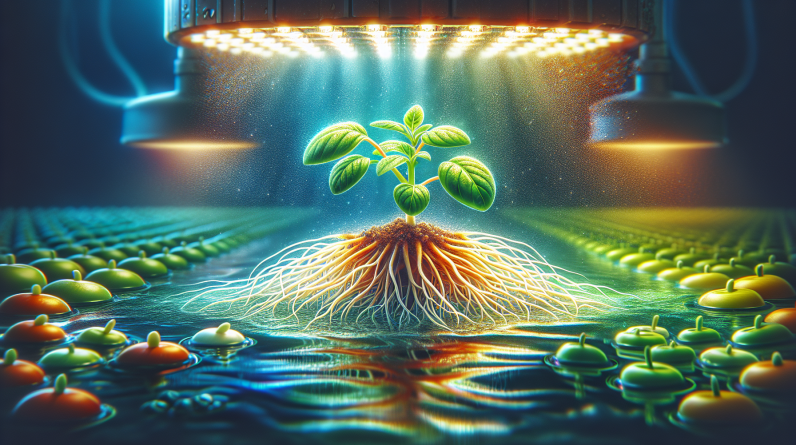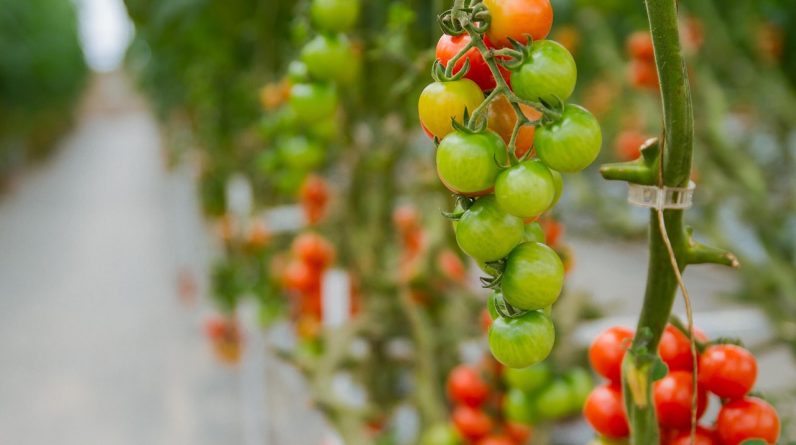
Are you curious about the possibility of growing seedlings hydroponically? Well, the answer is yes! Hydroponics, the method of growing plants without soil, is not limited to fully mature plants. With the right techniques and equipment, you can successfully grow seedlings hydroponically. In this article, we will explore the benefits and challenges of hydroponic seedling cultivation, and provide you with tips to get started on your own hydroponic gardening journey. So, if you’re ready to discover a new and efficient way of nurturing your plant babies, keep reading!
Hydroponic Seedling Basics
What is hydroponics?
Hydroponics is a method of growing plants without soil, where the nutrient-rich water solution serves as the growing medium instead. This innovative technique allows plants to thrive in a controlled environment, providing them with the necessary nutrients and eliminating the need for traditional soil-based gardening.
Advantages and disadvantages of hydroponics
There are several advantages to growing seedlings hydroponically. Firstly, hydroponic systems require less water compared to traditional gardening, as the water is recirculated within the system. This makes hydroponics an eco-friendly option while also reducing the water bill.
Secondly, hydroponic seedlings grow faster and produce higher yields compared to soil-based methods. This is because the plants receive the exact nutrients they need, delivered directly to their roots. The controlled environment also ensures optimal growing conditions, resulting in healthier and more robust seedlings.
However, there are a few disadvantages to consider as well. Hydroponic systems can be more expensive to set up initially, requiring investments in equipment and materials. Additionally, maintaining the nutrient solution and pH levels can be a bit more complex compared to traditional gardening. However, with proper research and understanding, these challenges can be overcome.
Why grow seedlings hydroponically?
Growing seedlings hydroponically offers numerous benefits to both novice and experienced gardeners. Firstly, hydroponic systems provide more control over the growth process, allowing you to grow seedlings year-round regardless of the weather or season. This is especially advantageous for those living in regions with extreme climates.
Furthermore, hydroponic seedlings are generally healthier and have fewer issues with pests and diseases compared to soil-grown ones. The controlled environment minimizes the risk of soil-borne diseases and reduces the need for pesticides, creating a safer and more organic growing experience.
Another advantage of growing seedlings hydroponically is the ability to maximize limited space. Hydroponic systems can be set up vertically or in smaller areas, allowing you to grow a larger quantity of seedlings in a smaller footprint. This is great for urban dwellers or those with limited outdoor space.
Choosing a Hydroponic System
Ebb and Flow (Flood and Drain)
The Ebb and Flow system, also known as the Flood and Drain system, is one of the most popular hydroponic systems for growing seedlings. It involves periodically flooding the growing tray with nutrient solution and then draining it back into the reservoir. This cycle ensures the roots receive proper oxygenation, promoting healthy growth.
Drip System
The Drip System is a commonly used hydroponic method for growing seedlings. It involves a network of tubes with emitters that deliver a nutrient solution drop by drop directly to the roots of the plants. This system allows for precise control over the nutrient dosage, ensuring that the seedlings receive a consistent supply of nutrients.
Nutrient Film Technique (NFT)
The Nutrient Film Technique (NFT) is a hydroponic system where a thin film of nutrient solution continuously flows over the roots of the seedlings, providing them with a constant supply of nutrients. This system requires a sloping growing channel to allow the solution to flow and maintain contact with the roots. NFT is a popular choice for growing small to medium-sized seedlings.
Deep Water Culture (DWC)
The Deep Water Culture (DWC) system is an excellent option for growing larger seedlings, such as tomatoes or peppers. In this system, the roots of the seedlings are submerged in a nutrient-rich water solution. Oxygen is supplied through air stones or diffusers, ensuring the roots receive adequate oxygenation for healthy growth.
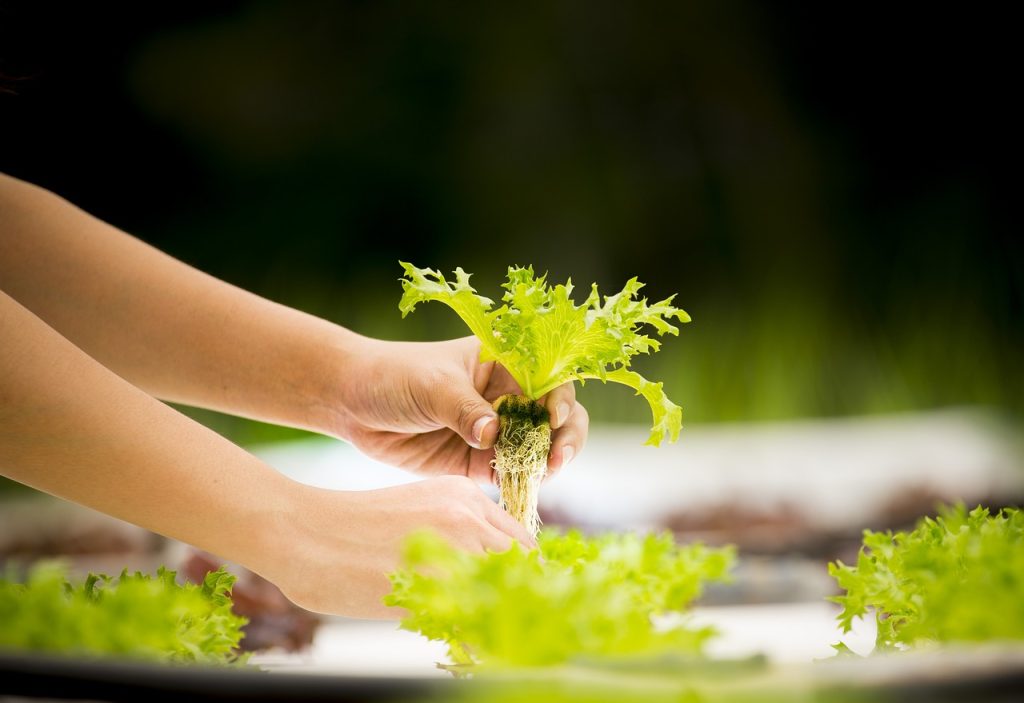
This image is property of pixabay.com.
Selecting Seeds and Germinating
Choosing the right seeds
When selecting seeds for hydroponic seedlings, it is important to choose varieties that are well-suited for hydroponic growing. Look for seeds labeled as “hydroponic” or “indoor-friendly.” These varieties are generally more adaptable to the controlled environment of hydroponic systems.
Additionally, consider the specific yield, growth rate, and space requirements of the plants you intend to grow. Some seedlings may outgrow your hydroponic setup if not chosen carefully. Researching the ideal seed varieties for hydroponic growing will greatly increase your chances of success.
Germination process
After selecting the appropriate seeds, it is crucial to properly germinate them before transferring them to the hydroponic system. Germination can be done using various methods, such as using seed trays, paper towels, or germination cubes.
To germinate seeds, ensure they are placed in a warm and moist environment. This encourages the seeds to sprout and develop roots. Once the seedlings have reached a suitable size and have well-established roots, they are ready to be planted in the hydroponic system.
Prepping the Hydroponic System
Cleaning and sanitizing
Before planting your seedlings, it is essential to clean and sanitize your hydroponic system thoroughly. This helps eliminate any potential pathogens or contaminants that could harm the seedlings. Clean all the components of the system, including the reservoir, growing trays, and tubes, using a mild detergent and rinse them thoroughly. Sanitize the system with a diluted hydrogen peroxide solution or an approved sanitizer to ensure a clean environment for your seedlings.
Preparing the nutrient solution
Next, prepare the nutrient solution according to the specific requirements of the plants you are growing. Hydroponic nutrient solutions are available in pre-mixed forms or can be custom-made by combining the necessary elements. Ensure the solution contains the right balance of macronutrients (nitrogen, phosphorus, and potassium), micronutrients (calcium, magnesium, iron, etc.), and supplemental compounds like amino acids or bio-stimulants.
Follow the manufacturer’s guidelines or consult a trusted resource to determine the appropriate nutrient concentration and pH levels for the stage of growth your seedlings are in. Mixing the nutrient solution accurately will provide the essential elements needed for healthy seedling development.
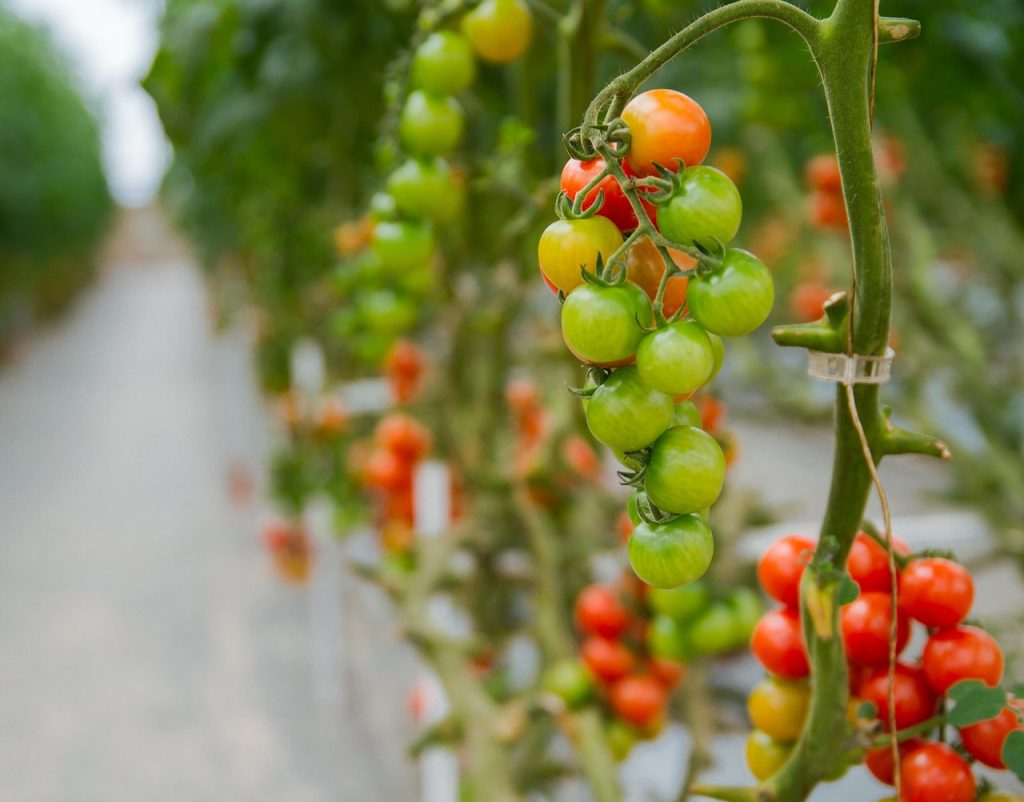
This image is property of pixabay.com.
Planting the Seedlings
Supporting the seedlings
To support the seedlings in the hydroponic system, you may need to use a supporting structure like a trellis or stakes. This is especially important for vining plants like cucumbers or beans that require vertical support. The support structure ensures the seedlings grow upright and prevents them from falling over as they mature. As the seedlings grow, gently weave the vines through the trellis or train them to climb the stakes for optimal growth.
Transplanting the seedlings
Once the seedlings have developed strong roots, it is time to carefully transplant them into the hydroponic system. Gently remove the seedlings from their germination container or medium, being careful not to damage the delicate roots. Place the seedlings into the designated area of the hydroponic system, ensuring the roots are fully submerged or in contact with the nutrient solution while providing adequate space for growth. Fill any empty spaces with growth medium or supporting material to stabilize the seedlings.
Providing Optimal Growing Conditions
Temperature and humidity control
Maintaining optimal temperature and humidity levels is crucial for the successful growth of hydroponic seedlings. Different plants have varying temperature requirements, but a general guideline is to keep the ambient temperature between 70-80°F (21-26°C) during the day and slightly cooler at night. Regularly monitor the temperature and adjust as necessary to avoid extremes that can stress the seedlings.
Humidity levels should ideally be kept around 50-70% to prevent excessive moisture or drying out of the seedlings. Using a humidifier or a dehumidifier can help regulate humidity levels within the growing area, ensuring ideal conditions for healthy seedling growth.
Lighting requirements
In a hydroponic system, providing adequate and appropriate lighting is vital for the photosynthesis process, which fuels plant growth. Depending on the stage of growth and the specific light requirements of your seedlings, choose a suitable lighting system. LED grow lights are a popular choice for hydroponic setups as they provide the full spectrum of light required for plant development while being energy-efficient and long-lasting.
Ensure the lights are positioned at the correct distance from the seedlings to prevent overexposure or inadequate lighting. Follow the manufacturer’s guidelines or consult a lighting expert to determine the optimal lighting schedule and intensity for your seedlings.
pH and EC management
Maintaining the correct pH and electrical conductivity (EC) levels in the nutrient solution is crucial for hydroponic seedling success. pH levels should be regularly monitored and adjusted within the ideal range specific to the plants you are growing. Most plants thrive in a slightly acidic pH range of 5.5-6.5. Use pH adjusting solutions or additives to maintain the desired pH level.
EC refers to the concentration of dissolved salts or nutrients in the nutrient solution. It is important to monitor and adjust the EC levels to ensure the seedlings receive the appropriate nutrient dosage. Measure the EC using a conductivity meter and modify the nutrient solution accordingly, following the guidelines provided by the manufacturer or expert resources.
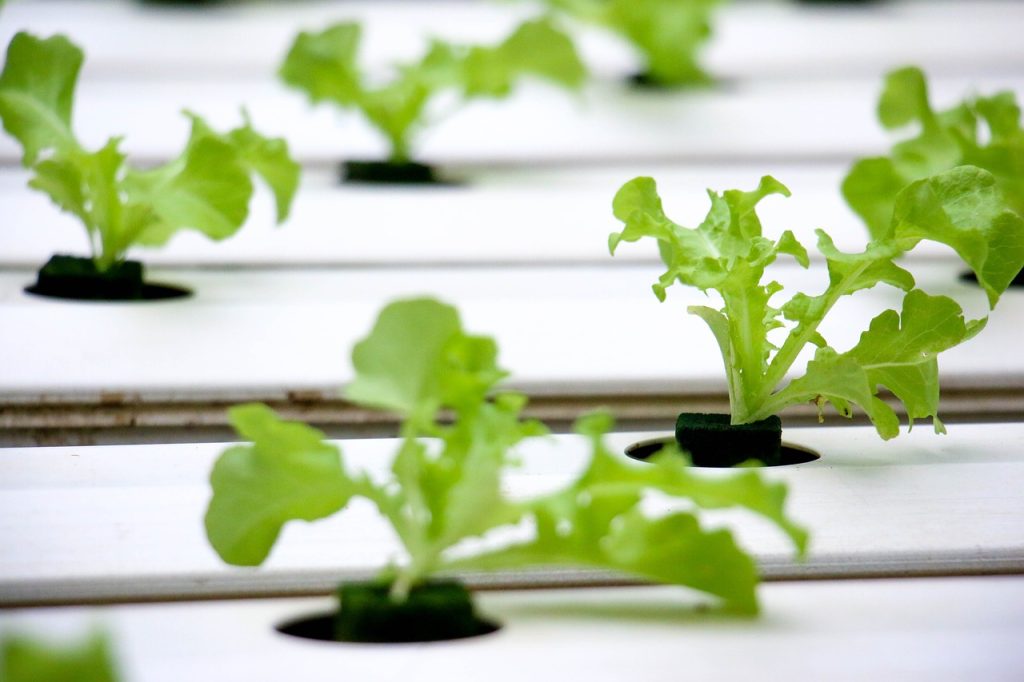
This image is property of pixabay.com.
Feeding and Nurturing the Seedlings
Nutrient solution maintenance
Regular maintenance of the nutrient solution is essential for healthy seedling growth. Continuously monitor the nutrient levels within the solution and adjust as needed. This ensures the seedlings receive a balanced supply of nutrients throughout their growth cycle. It is recommended to change the nutrient solution at regular intervals to prevent nutrient imbalances or the buildup of harmful substances.
Watering and nutrient dosage
Monitoring the watering and nutrient dosage is crucial for maintaining the health and well-being of your hydroponic seedlings. Ensure the seedlings receive a sufficient amount of water and nutrients while avoiding overwatering or nutrient excess. Follow the manufacturer’s guidelines or consult expert resources to determine the appropriate amount of water and nutrients your seedlings require at different growth stages.
Supplementing with growth enhancers
To promote healthy and vigorous growth, consider supplementing your hydroponic system with growth enhancers or supplements. These products can provide additional nutrients, hormones, or beneficial microbes that boost plant growth and resilience. However, it is important to choose reliable and organic options, following the recommended dosage and application instructions provided by the manufacturer.
Pest and Disease Management
Preventing pests and diseases
One of the advantages of hydroponic growing is the reduced risk of pests and diseases. However, it is still important to implement preventive measures to minimize the chances of infestations. Ensure your growing area is clean and free from debris, regularly inspect the plants for signs of pests, and implement good hygiene practices. Additionally, maintaining proper air circulation and using sterilized tools and equipment can help prevent the introduction of pathogens.
Identifying and treating common issues
Despite preventive measures, it is possible for hydroponic seedlings to encounter common issues like nutrient deficiencies, leaf discoloration, or pest infestations. It is crucial to identify these issues early on and take appropriate action. Research common symptoms or consult expert resources to accurately diagnose problems and apply suitable treatments. Natural remedies or targeted organic pesticides can be effective in managing pests, while adjusting the nutrient solution or supplementing with missing elements can address nutrient deficiencies.
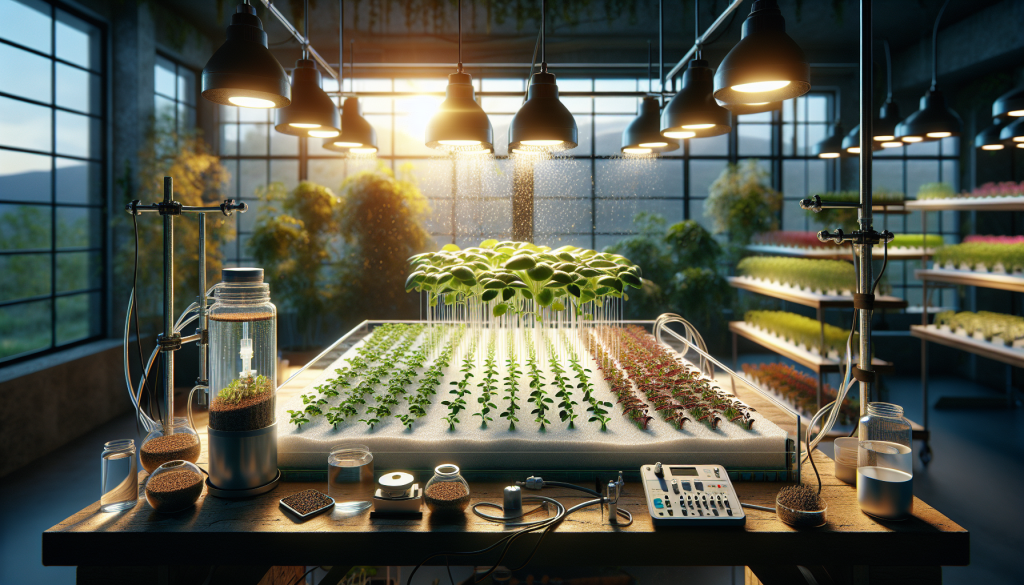
Monitoring and Adjusting
Regular monitoring of plants
Regular monitoring is vital to ensure the health and growth of your hydroponic seedlings. Observe the plants closely, checking for any signs of stress, nutrient deficiencies, or disease symptoms. This will allow you to detect issues early on and take necessary action promptly.
Additionally, monitor the pH and EC levels of the nutrient solution regularly, ensuring they remain within the desired range. Keep a log of your observations and adjustments, allowing you to track progress and make informed decisions for the health of your seedlings.
Adjusting nutrient levels
As your hydroponic seedlings grow, their nutrient requirements may change. Adjusting the nutrient levels in the solution accordingly is essential for their continued development. Monitoring the pH and EC levels will help you determine if any adjustments are necessary. Regularly test and monitor the nutrient solution, making appropriate modifications to maintain optimal plant nutrition.
Maintaining system functionality
To ensure your hydroponic system continues to support healthy seedling growth, maintain its functionality by regularly checking the components and equipment. Inspect and clean the growing trays, tubes, and reservoir to prevent clogs or blockages that could disrupt the nutrient flow. Ensure pumps, timers, and lights are in working condition and replace any faulty or worn-out parts. Regular system maintenance will help sustain an optimal growing environment for your seedlings.
Transplanting Seedlings to Soil
Hardening off the seedlings
Before transplanting your hydroponic seedlings to soil or larger containers, it is important to gradually acclimate them to the outdoor growing environment. This process, known as hardening off, helps the seedlings transition from the controlled indoor environment to the potentially harsher outdoor conditions. Gradually expose the seedlings to increasing amounts of sunlight, wind, and temperature fluctuations over a period of one to two weeks.
Transplanting to soil or larger containers
Once the seedlings have been successfully hardened off, they are ready to be transplanted to soil or larger containers. Choose a suitable location in your garden or larger pots, ensuring the soil is well-drained and enriched with organic matter. Gently remove the seedlings from the hydroponic system, carefully preserving the roots, and transplant them at the same depth they were previously growing. Water the newly transplanted seedlings thoroughly and monitor them closely as they adapt to their new environment.
In conclusion, growing seedlings hydroponically offers numerous advantages for gardeners looking to maximize their yields and overcome limitations such as space or seasonal restrictions. By following the steps outlined in this comprehensive guide, you can successfully nurture and develop healthy seedlings using a variety of hydroponic systems. Remember to continuously monitor and adjust the growing conditions, provide optimal nutrients and care, and be vigilant in preventing and addressing any issues that may arise. With dedication and a bit of learning, you’ll be able to enjoy the benefits of hydroponically grown seedlings and take pride in your thriving garden.
